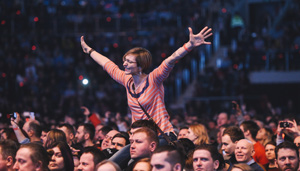There are many social media KPIs (key performance indicators) that you can use to track how well your social media marketing plan is performing, but what should you really be tracking? In this guide we will go over 10 KPIs that you should track and why you should track them.
Social Media KPIs Related to Engagement
The biggest area you should be paying attention to on social media is your level of engagement because it is the jumping off point for improvement in all social media. If you have a large reach, but have low engagement, it can be said that you don’t have a marketing message or content that people like. Reaching thousands or millions of people means nothing if what you offer is boring. If your audience is kept engaged even the smallest audience will help you generate more leads.

Social media platforms, like Facebook and Twitter, can actually decide whether or not your audience actually sees what you are posting. These two platforms see engagement as a sign of your popularity; the more your audience interacts with your content, the more people will see it.
Social Media KPIs Related to Engagement
- Clicks: Clicks on links reflect the quality of your content; people will likely not click on any links if your content is lacking in quality. Your biggest fans will probably click on anything and everything you put out; most people, especially new people, will likely only click on the posts/content that interests them. A huge amount of clicks with little to no likes shows that your post got some attentions, but the quality of the content didn’t encourage the viewer to engage. If your content is not getting clicks you should test your content by testing different visuals or titles.
- Likes: If you getting likes you are getting attention because people tend to like popular things. More likes also tells a social media platform algorithms that your content deserves a higher spot in search results.
- Shares: A person liking your content is good, but hitting like on a post can be passive action. When someone shares your post they are making an effort to say that they identify with what your post is saying. They are giving a personal recommendation to many people. This shows that you are putting out quality work.
- Comments: If you are putting out great content people are going to talk about it. Even if the comments are negative, it’s better than no comments. If no one is talking about your content it shows that you’re content is not interesting enough; silence, in this case, is not golden. It should also be said that getting comments on your comments is a great sign that people are interested in what you have to say and want to engage with you.
- Brand Mentions: When people mention your brand, or tag it in a comment or post, it shows that people are talking about what you’re putting out, even when you’re not there. This is a KPI that zones in on how relevant you are because it shows that people are thinking about you.
- Profile Visits: This metric is not provided by all platforms, but you should use it to your advantage if it is available. You may have plenty of followers on social media, but that does not mean they have ever visited your profile; however, people who are starting to look into you will likely visit your profile. This KPI is not as important as the others, but visits to your profile may indicate interest beyond your content.
- Active Followers: Someone is considered your active follower if they have logged in and interacted with your content in the past 30 days. People who like your content are not guaranteed to regularly visit your page or look at its content.
Social Media KPIs Related to Reach
Although reach is an old marketing metric, it’s still important for your social media KPIs. Your reach shows you how far the message of your content is going. Reach however can be a bit misleading as it only shows how many people maybe saw your content or that they could see your content. Reach is an estimate in comparison to engagement which is definite and able to be measured.

- Fans or Followers: All the people following you on social media shows your reach minus engagement. This is all the people that can possibly see your content and want to see it.
- Impressions: Impressions indicate how often your post showed up in a person’s newsfeed or timeline. This shows that they have followed you or your content has been shared by someone they know. Every impression you get does not mean that someone actually looked at your content; it simply means they had the chance to see it. Even though it is vague, more is always better.
- Traffic Data: This is one of the biggest KPIs. This measures the percentage of traffic to your site that is coming from social media. If you are spending a lot of time on your social media content you’ll want to make sure that this number reflects the effort that you are putting forth.
Conclusion
There are many KPIs available to track your social media KPIs, but be sure to focus on the ones that work best for you. Always track what works best and it will accurately show your successes.
